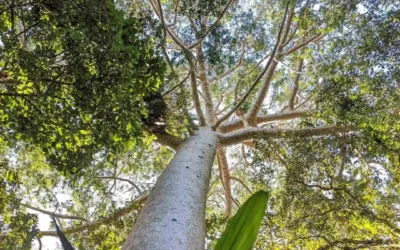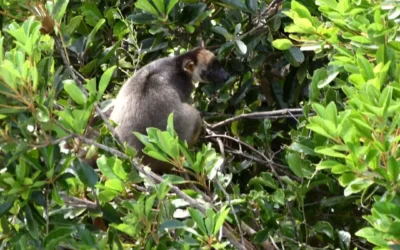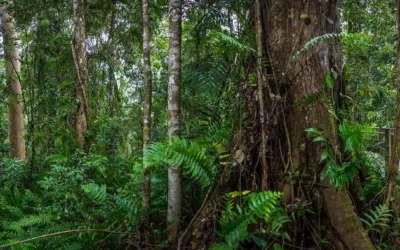World Heritage Rainforest in Bloom
A Blooming Great Time of Year in the Cairns Rainforest
The unseasonably wet conditions experienced during the last couple of months have had a notable effect on the World Heritage listed Cairns rainforest surrounding Skyrail, with many of the plants along the cableway bursting into bloom.
As your experience departs the Smithfield Terminal, the Dodder Laurel (Lauraceae) vine has been flowering in small numbers. The small yellow flowers are fairly inconspicuous, as are its light coloured berries, so you’ll need to look closely! Whilst the vine is actually a plant parasite, it only occurs in the rainforest on a small selection of species that have evolved in such a way that their relationship with the vine is relatively balanced.
As you journey over the tropical rainforests of Cairns between Smithfield Station and Red Peak, the Pink Bloodwood (Myrtaceae) has been fruiting and its small white flowers and grey gumnuts make quite a show as they are produced in clusters. This attractive tree gets its name from the pink colour of its timber and it’s also the preferred food source for the caterpillars of the Dull Oakblue Butterfly.
Speaking of preferred food, the black berries of both the Sumac (Anacardiaceae) and Celerywood (Araliaceae) have been a big hit with the local birds.
Interestingly, the flowers of both trees are borne on bush-like structures known as panicles and their leaves are compound – i.e. several leaflets make up a single leaf. The Celerywood gets its name from the strong smell of celery that its crushed leaves emit.
Joining the floral foray in the Cairns rainforest has been the Kuranda Quandong (Elaeocarpaceae), the flowers of which appear cream in colour and are produced in small clusters. The fruits are large green drupes with extremely dry fruit flesh that is officially edible, but rather unpalatable to most people. The hard internal husk is shaped like a rugby ball in five sections. It’s hard to crack, but once you do, you’ll find a very tasty kernel whose flavour is reminiscent of a cross between a coconut and an almond. The Djabugandjii once harvested these trees for their delectable nuts.
Like all Quandongs, the Kuranda Quandong has distinctive red new leaves. They are an attractive slow growing tree well suited to parks and large gardens. Some notable specimens can be spotted near the Kuranda Hotel so keep an eye out when you’re up that way next time.
Looking for your opportunity to experience this amazing show of colour in the Cairns rainforest? check out the Skyrail Rainforest Foundation for discounted Skyrail tickets and your chance to access the World Heritage listed rainforest of Tropical North Queensland.
Researched and written by Skyrail Rainforest Cableway Ranger, Tore Lien Linde.



